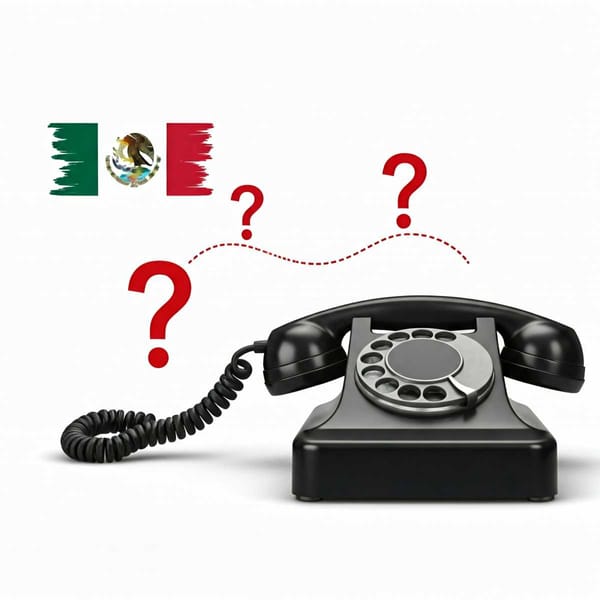The Liberal General Porfirio Diaz: An Unusual Case in Mexico's History
Porfirio Diaz is one of the most controversial characters in Mexican history; the peculiarity of his figure stems from his long tenure as head of the Mexican government during the last decades of the 19th century and the first decades of the 20th century.

One of the most controversial characters in the history of Mexico is the liberal general Porfirio Díaz; the peculiarity of his figure comes from his long tenure as head of the Mexican government during the last decades of the 19th century and the first decades of the 20th century.
José de la Cruz Porfirio Díaz Mori was born on September 15, 1830 in the city of Oaxaca; his parents were Petrona Mori, originally from the Mixtec region of that state, and José Faustino Díaz, a tinsmith artisan of Spanish descent. Porfirio's father died of cholera when he was three years old, so his education and care were in charge of his mother, who also managed the Mesón la Soledad, which was their property.
The long-lived general began his education in the municipal elementary school of his hometown and learned Latin in the parish of San Pedro Teococuilco. His uncle, the clergyman José Agustín Domínguez, oriented his formation towards the ecclesiastical service and Díaz entered the Colegio Seminario Conciliar de Oaxaca as an external student; however, due to the influence of Maco Pérez, a well-known Oaxacan liberal, he abandoned his clerical studies and decided to enter the Instituto de Ciencias y Artes of the state to study law.
Distinguished professors such as Benito Juárez, at that time governor of Oaxaca, Manuel Dublán and Manuel Iturribarría, among others, intervened in his education. His family faced an important crisis when the Mesón went bankrupt and they had to move their place of residence; his mother embraced the trade of spinner and weaver of shawl ends. Díaz, being the eldest son, worked in various trades to contribute to the family's support.
Porfirio Diaz: A Military Serviceman
In 1846, with the outbreak of the war between Mexico and the United States, Porfirio Díaz enlisted in the military service; it was the first time he entered the armed forces, in the Trujano battalion of the National Guard. In 1854, Díaz joined the Ayutla Revolution; he participated in the operations in the town of Teotongo; he fought against Santa Anna's forces under the command of José María Herrera; when he was defeated by the latter, he was a fugitive until the liberal triumph led by Juan Álvarez and Ignacio Comonfort in 1855.
José María García, interim governor of Oaxaca, appointed him sub-prefect of the district of Ixtlán; as the first state governor, Benito Juárez gave him the rank of infantry major of the National Guard. With the outbreak of the War of the Reform Laws, Diaz returned to active military service, participating in the liberal side in defense of the Constitution of 1857; in 1858 he participated in the capture of the city of Oaxac, and in 1859 he served as military commander of the district of Tehuantepec.
In 1861, already with the rank of colonel, Diaz triumphantly entered Mexico City with his troops along with the rest of the liberal army on January 4, which ended the "Three Years' War". In that year, suffering from typhus, he was elected as a deputy to the second federal Congress for the district of Ocotlán, the municipality of his native state; a few months later he asked for a leave of absence to face the rebellion of the conservative Leonardo Márquez; after defeating him, Benito Juárez, in his capacity as constitutional president, promoted him to brigadier general.
Porfirio Diaz, an Effective General
In 1862, Díaz faced the French invasion, on April 28, in the battle of Cumbres de Alcultzingo and, a few days later, on May 5, in the defense of the city of Puebla; a year later, he faced the French siege of the same city on March 16.
Defeated, already with the rank of effective brigadier general, Díaz, together with other liberal generals, among which were Gonzáles Ortega, Ignacio de la Llave, and Mariano Escobedo, was taken prisoner by Forey's forces, all of them refusing to sign the commitment to remain neutral until the end of the conflict.
After escaping to Mexico City, Diaz was promoted by the government of Juarez to major general in October 1863 and took charge of the Ejercito de Oriente, whose jurisdiction was in the states of Oaxaca, Veracruz, Chiapas, Tabasco, Campeche, and Yucatan. A few days after his appointment, on October 28, he assumed responsibility as interim governor of his native state; in January 1865, he surrendered the city to the siege of Marshal Bazaine, who had besieged it; he was taken prisoner and imprisoned in a convent, from which he was able to escape eight months later.
In 1866, again in command of the Army of the East, Díaz managed to disrupt the invading army and the conservatives who had joined them on several occasions; on October 31, he regained control of the city of Oaxaca; On April 2, 1867, General Díaz regained control of the city of Puebla, after weeks of siege; on June 21, Díaz took control of Mexico City, after having besieged it for some months; shortly before, Maximilian surrendered the city of Querétaro to the Juarista forces.
Porfirio Diaz and the Republic
Once the defense against Maximilian's intervention was over, Diaz presented himself as a candidate for the presidency of the Republic, disputing the election with Benito Juarez; after his defeat in the elections of November 1867, Diaz retired to the hacienda of La Noria in his native state and distanced himself from political life, rejecting the appointment of an ambassador to the United States, offered by Juarez himself.
In 1871, after losing again the presidential election against Juarez, Diaz disowned Juarez's government and launched his Plan de la Noria; he was defeated and embraced exile in New York City, in the United States. Upon his return to the country, after Juarez died in 1872, he retired to private life; three years later, in 1875, before the imminent reelection of Sebastian Lerdo de Tejada, Diaz published the Plan of Tuxtepec, in which he denounced violations to the Constitution, embracing the principle of non-reelection, defending the sovereignty of the states, and taking up arms; in 1876, after the confrontation, Lerdo de Tejada abandoned power in November.
By May 1877, Diaz protested for the first time as President of the Republic; the first four years of a long administration of a little more than three decades were inaugurated. During his long administration, which was only interrupted by the small step of Manuel González from 1880 to 1884, the government of the Oaxacan general was characterized by establishing peace through a strong-handed policy.
The country's political tranquility allowed Mexico to gradually incorporate the technological advances engendered by the Second Industrial Revolution, which took place at a global level and which, in the expansion of capitalism as the dominant economic system, were indispensable to guarantee the development of the newly born States, in the 19th century, in the American continent.
A History of Mexican Development
During the presidential period of Porfirio Díaz, Mexico became attractive for direct foreign investment; North American capital and capital from countries of the old continent such as England, Germany, and France, among others, began to invest mainly in the mining sector and, towards the beginning of the last century, in the exploitation of the hydrocarbon base for the accelerated development of the industry: oil.
On the other hand, the late development of the country gave rise to the birth of a political and economic class that for thirty years was in power, preventing the rise of any group, sector, or personage alien to their interests.
Land grabbing and dispossession took place under the protection of the relationships established for the preservation of the consolidated status quo for three decades; the marginalization, backwardness, and subjugation of the base of the Porfirian social pyramid gradually led to the outbreak of a social and armed movement of great proportions, only comparable to what had happened a hundred years earlier during the first months of the Independence Revolution; under the protection of order and progress, a system of semi-slavery was established in the rural areas and the factories of Mexico.
In 1908, Diaz showed his desire to retire from the country's public life, and in an interview with the North American journalist James Creelman, he assured his farewell and opened the door for greater organization and political participation with a view to the 1910 elections.
Diaz's Resignation and the Treaties of Ciudad Juarez, Mexico's Independence
Francisco I. Madero, a landowner, and politician from the north of the country emerged as the most serious contender to replace the long-lived general in such elections; however, a few months before the electoral process took place, he was apprehended by presidential orders.
With Madero in jail, Diaz won again the 1910 elections. Although confident in his regime and the midst of the celebrations of the centenary of Mexico's Independence, the hecatomb broke out on November 20 of that same year. In only six months, the regular Porfirian army lost ground to the revolutionary troops that rose in different strategic points of the country and gradually constrained the authority of a tired and long-lived general.
On May 10, 1911, Ciudad Juarez fell; the revolutionaries took control of the zone through which they could cut off the supply of different inputs necessary for the survival of the Porfirian system. On the 21st of the same month, the representatives of the still president signed the Treaties of Ciudad Juarez with the revolutionary leadership, with which the resignation of Diaz was agreed and on the 25th, the resignation of the old dictator was presented before Congress.
On May 26, 1911, Porfirio Diaz Mori boarded the train that would take him to the port of Veracruz and on the 31st he embarked on the old continent. During his stay in Europe, he enjoyed French social life; he spent his last years traveling to different destinations only frequented by the political and economic elite of the old continent until the outbreak of World War I forced him to go into exile.
Exiled, Porfirio Diaz died on July 2, 1915. His remains were never repatriated to Mexico and are currently in the Montparnasse cemetery in Paris.




